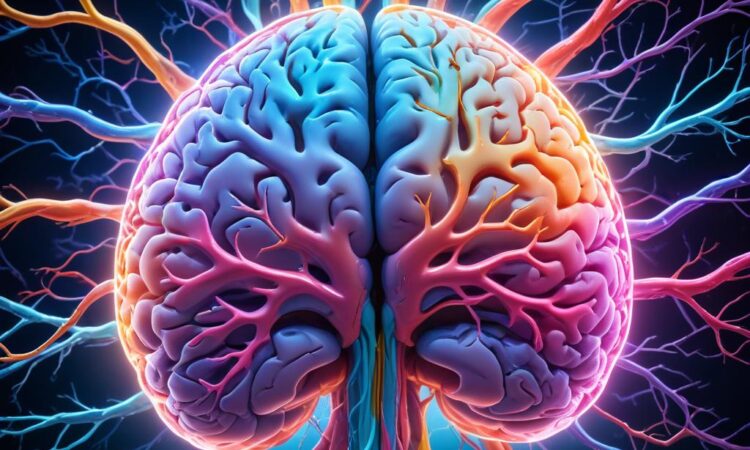Neuroscience and Brain Research: Unraveling the Mysteries of the Mind
The human brain, a complex organ comprised of billions of interconnected neurons, is the epicenter of our thoughts, emotions, and actions. For centuries, scientists have strived to understand its intricacies, embarking on a journey of discovery that has yielded profound insights into the workings of the mind. Today, neuroscience, the study of the nervous system, is experiencing a golden age, propelled by innovative technologies and a surge in scientific curiosity. This ongoing research is shedding light on the intricate mechanisms that underpin cognitive functions, emotional responses, and even consciousness itself, leading to new treatments for neurological disorders and groundbreaking advances in artificial intelligence.
The Power of Neuroimaging: Visualizing the Brain’s Inner Workings
A pivotal breakthrough in neuroscience has been the development of neuroimaging techniques, which allow researchers to peer into the living brain and observe its activity in real-time. These technologies, such as magnetic resonance imaging (MRI), functional magnetic resonance imaging (fMRI), electroencephalography (EEG), and magnetoencephalography (MEG), offer unparalleled insights into the structure and function of the brain.
MRI scans provide detailed anatomical images of the brain, revealing its intricate network of neurons, while fMRI tracks blood flow, indicating areas of heightened brain activity. EEG and MEG capture electrical and magnetic signals generated by brain activity, providing insights into brain waves and neural oscillations.
Neuroimaging has revolutionized our understanding of brain disorders, enabling the diagnosis and monitoring of conditions like Alzheimer’s disease, Parkinson’s disease, and epilepsy. It has also played a crucial role in understanding the neural correlates of cognitive processes, such as memory, language, and decision-making.
Brain-Computer Interfaces: Bridging the Gap Between Mind and Machine
One of the most exciting frontiers in neuroscience is the development of brain-computer interfaces (BCIs). These devices, which establish communication pathways between the brain and external devices, offer the potential to revolutionize human-computer interaction and provide new avenues for treating neurological disorders.
BCIs can be invasive or non-invasive. Invasive BCIs involve surgically implanting electrodes directly into the brain, allowing for more precise and detailed communication. Non-invasive BCIs, on the other hand, rely on external sensors, such as EEG caps, to detect brain activity.
BCIs are currently being explored for a wide range of applications, including:
- Prosthetics control: BCIs enable individuals with paralysis to control prosthetic limbs using their thoughts, restoring lost mobility.
- Restoring lost communication: BCIs can help individuals with locked-in syndrome, who are unable to move or speak, to communicate through thought-controlled devices.
- Treating neurological disorders: BCIs are being investigated as potential treatments for epilepsy, Parkinson’s disease, and other neurological conditions.
- Augmented reality and virtual reality: BCIs have the potential to enhance human interaction with digital environments, allowing for more intuitive and immersive experiences.
The Search for Consciousness: A Journey into the Mind’s Inner Sanctum
One of the most profound mysteries in neuroscience is the nature of consciousness. What is it, how does it arise, and what makes us aware of ourselves and the world around us?
Consciousness is a complex and multifaceted phenomenon that has captivated philosophers and scientists for centuries. While there is no single agreed-upon definition, consciousness is generally understood as the state of being aware of oneself and one’s surroundings.
Neuroscience is making strides in understanding the neural correlates of consciousness, identifying brain regions and networks that are involved in various aspects of awareness. Studies have shown that areas like the prefrontal cortex, thalamus, and reticular activating system play crucial roles in consciousness.
Researchers are also exploring the role of neural oscillations, or synchronized brain activity, in consciousness. Different brain states, such as wakefulness, sleep, and dreaming, are characterized by unique patterns of brainwave activity.
The Future of Neuroscience: Pushing the Boundaries of Our Understanding
Neuroscience is a rapidly evolving field, and ongoing research is constantly pushing the boundaries of our understanding of the brain. As technology advances, we can expect even more sophisticated tools to unravel the mysteries of the mind.
Here are some of the exciting areas of future research:
- Brain-machine interfaces: Continued development of BCIs, with greater precision and integration, holds the potential for more advanced applications, including restoring lost senses, enhancing cognitive abilities, and potentially even creating new forms of human-machine collaboration.
- Neuroprosthetics: Research into neuroprosthetics is aimed at developing devices that can replace or enhance damaged or lost functions of the brain, such as vision, hearing, and movement.
- Personalized medicine: Understanding the unique genetic and neurobiological profiles of individuals can lead to tailored treatments for neurological disorders and mental health conditions.
- Artificial intelligence: Neuroscience is inspiring new approaches to artificial intelligence, particularly in the areas of machine learning and deep learning. By mimicking the brain’s structure and function, AI systems can be designed to perform complex tasks, such as image recognition, language processing, and problem-solving.
Conclusion: Unlocking the Potential of the Human Brain
Neuroscience is a field brimming with potential, offering exciting possibilities for improving human health, enhancing human capabilities, and deepening our understanding of the very nature of our existence. The journey into the mysteries of the brain is a continuous exploration, a quest to unravel the secrets of the mind and unlock its full potential.

